Monster Match
Rita Tlemcani & Cole Sohn
Artist’s Statement
Monster Match is a game where the objective is to build a monster fighter and triumph over your friends. Based loosely on the board game King of Tokyo, players take turns making actions and purchasing body part cards to upgrade their monster. Based on a die roll, players can take a certain number of actions each turn including collecting coins, gathering stars, and attacking other players. Players have to strategize to try to either be the last monster standing or be the first to collect 20 stars. Players can purchase new monster part card with coins which allows them to perform more actions per turn to achieve their desired objectives.
Monster Match is a game about expression and competition. Players can express themselves through their monster designs and playstyles. If a player wants to try and quickly eliminate everyone else, they can go all in on a fierce body. If a player is in it for the long game, they can purchase legs that help them collect money faster. If a player wants to try to sneak by and win by collecting 20 stars, they can try that too if they think they can survive. There are many part options allowing players to play the way they want and create the monsters they want. They can be ferocious, silly, or disgusting as they quickly evolve their monster throughout the game.
Concept Maps and Brainstorming:
We sketched the starter skeleton and an example monster:

We also drew our idea of how the table set up should look like:

Then we started thinking about the elements used and goals:

We thought about using bonus cards as a stretch goal:

Then we made a mind map of the game’s dynamics:

Initial Decisions:
We knew we needed many monster part cards, a die, and some way to keep track of money, stars, and health.
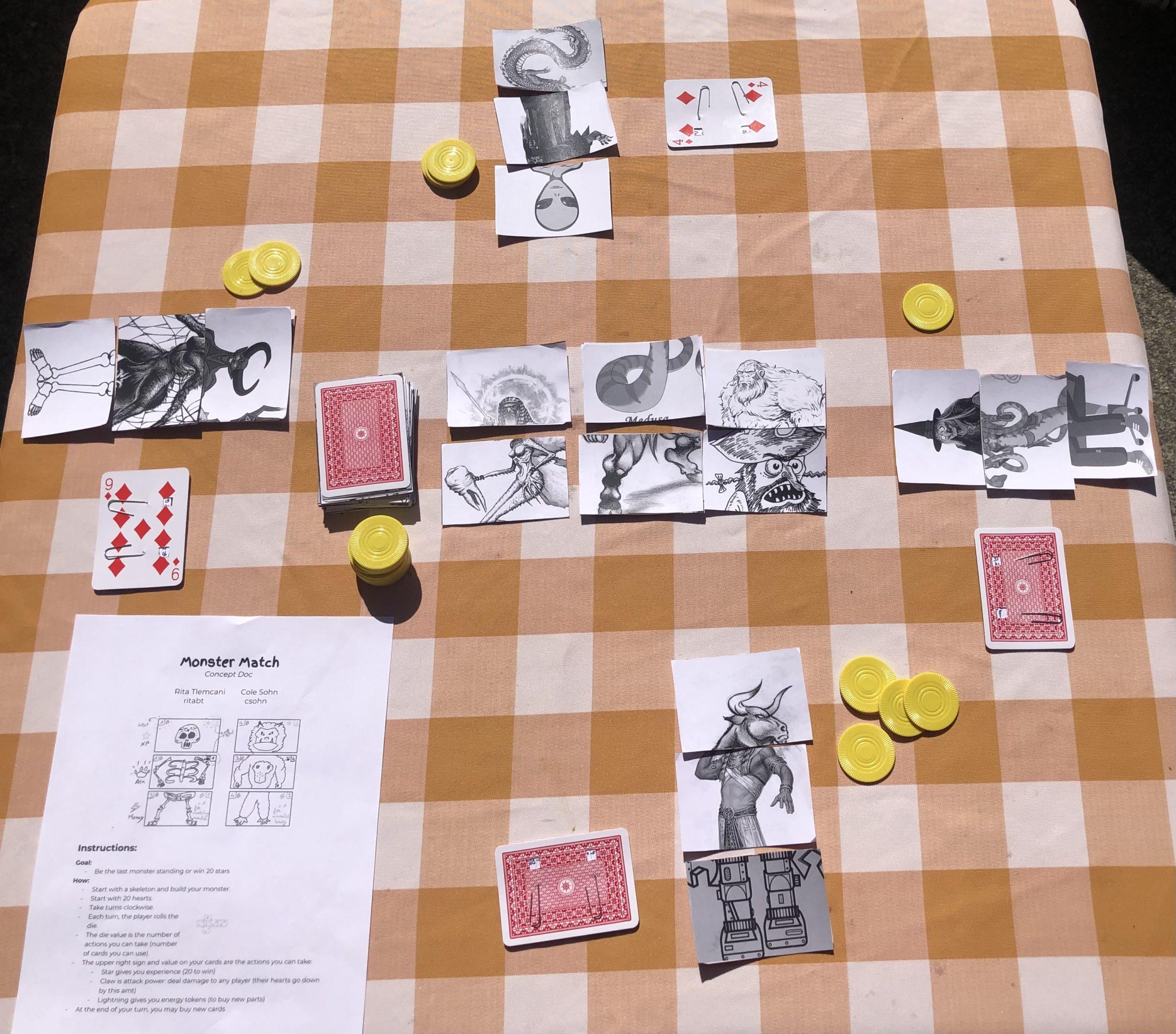
Counter cards: Following the example of King of Tokyo, we built prototype counter cards that allowed the players to slide a wheel to see their values. We wanted currency to be tangible so we used chips from a poker set. We were not initially sure what symbols would be best for each category.
Symbols: We initially started with an electric bolt for money (to keep in line with King of Tokyo and tie in to the fact that money was gained from legs), a claw for attack, a heart for health, and a star for stars (similar to exp from video games). We did not differentiate between price symbols and money gained for leg card:
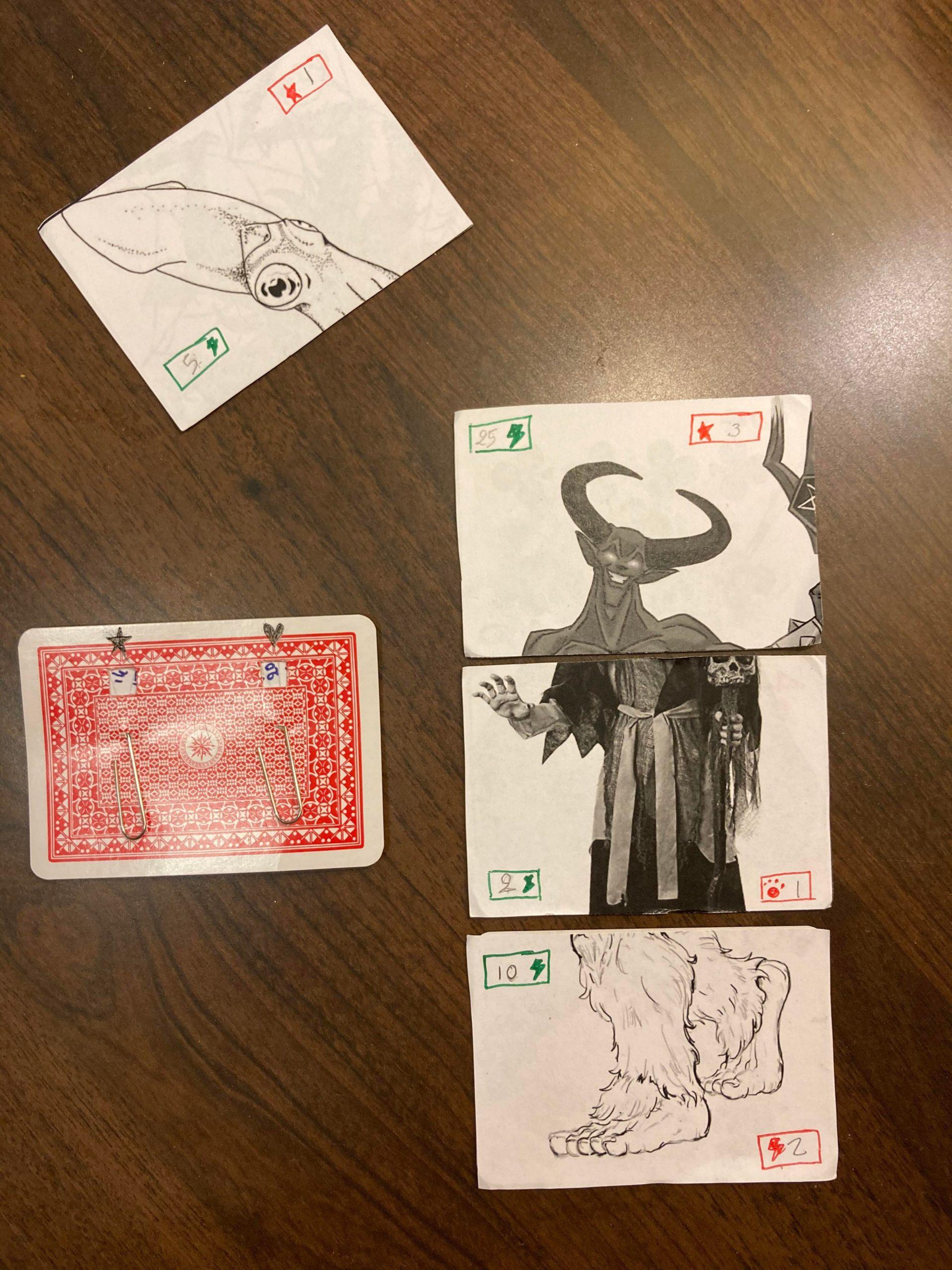
Monster Part Cards: We brainstormed all the monsters we could think of and tried to sort them into categories. We then chose the five most interesting ideas from each category. The categories we settled on were undead, fairytale, myth, and technology. Categories were important because we initially wanted to include bonuses for matching a type or mixing between types depending on the card. We chose monster images from pexels, google images, and pinterest that could be divided into head, torso, and legs. We printed these images in black and white, which we found actually unified things into a more consistent style. We then cut and glued them onto playing cards. Because we had 60 monster cards plus 7 extra skeletons (21 extra cards), this was a time consuming process. We wrote initial values such as price and ability counters in pencil so they could be modified and balanced after each playtest.
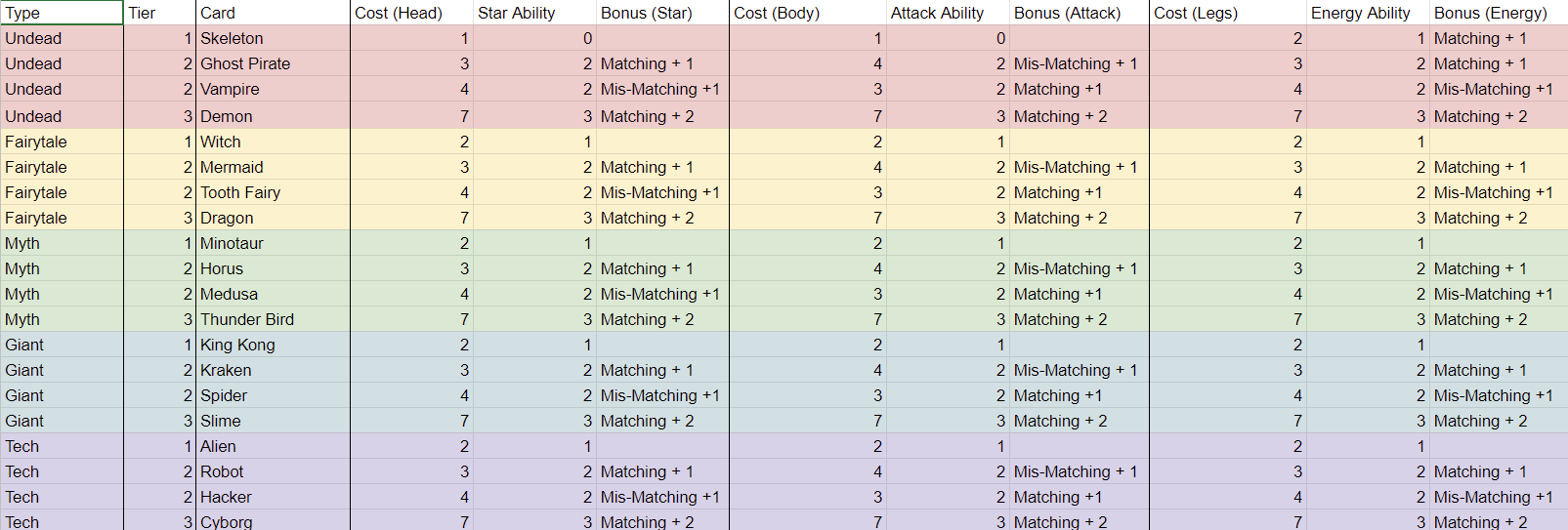
Iterations:
We found the playtesting sessions to be very helpful in improving our game. We made sure to write our observations as people were playing the game and ask them for feedback at the end and what they would change. Here is what we learned from each playtesting session and the changes we made afterwards:
Playtest 1:
Feedback from players:
- The game was slow at first due to confusing rules.
- The players were confused about which values on the cards are the cost and which are effects.
- The cards were also hard to use as we printed the images and glued the paper to real cards which made all the cards a little bit sticky. Similarly the initial counter that we made wasn’t functioning well.
- It was too easy to buy great cards. One player bought a level 2 head card and won the game quickly. Other players tried to attack, but the attacks were too weak and the players all started with 20 hearts.
Changes made:
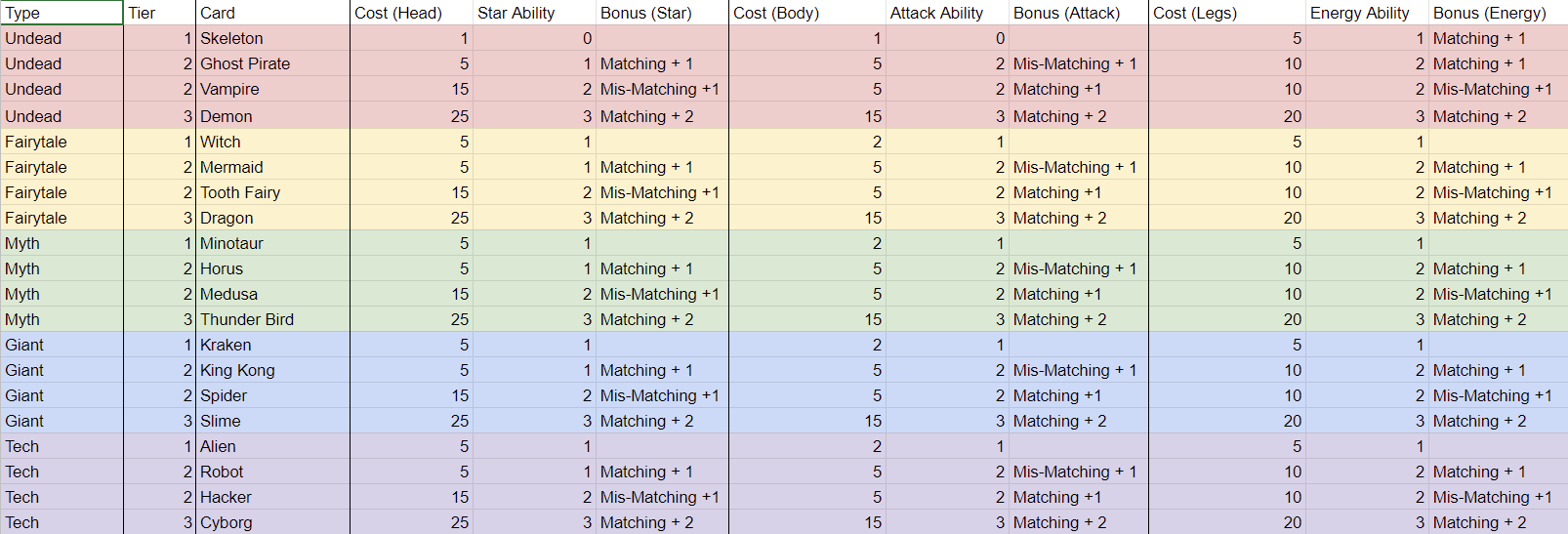
- We focused first on rebalancing the values. We kept weak cards cheap but drastically increased the price of good cards.
- We also wanted to encourage more attacking so we made attack cards (torsos) the cheapest, money cards (legs) middle prices, and star cards (heads) the most expensive.
- Due to the slow start in our first game, we added a bonus to the starting legs that gave more coins for players who had full skeletons to help players rack up money fast.
- We updated the cards by erasing our initial values and trying out the new ones.
Playtest 2:
Feedback from players:
- The starting skeleton bonus changed the game in a way we had not intended. It discouraged players from buying new cards and instead keep racking up money to buy an expensive head card.
- Cards, especially leg cards, were way too expensive, prohibiting players from experimenting with different combinations.
- Players were still not attacking each other as much as we would have liked.
- Explaining the rules took some time and we wanted the players to be able to get started quicker.
Changes made:
- We removed the starting skeleton bonus and instead gave all players two starting coins to get the game moving faster.
- We once again increased the head card prices and decreased the leg card prices as a whole.
- We decreased the number of hearts from 20 to 12.
- We revamped the cards and made them easy to print and read, with differently colored unique symbols. Symbols were made more intuitive, like coins for money and a price tag for price – replacing the confusing electricity symbol. We also reprinted the counter cards and made them more user-friendly with more clearly labeled values.
- We rewrote our rules to include graphics and simple instructions. We printed multiple rule sheets so multiple players could read the rules at a time.

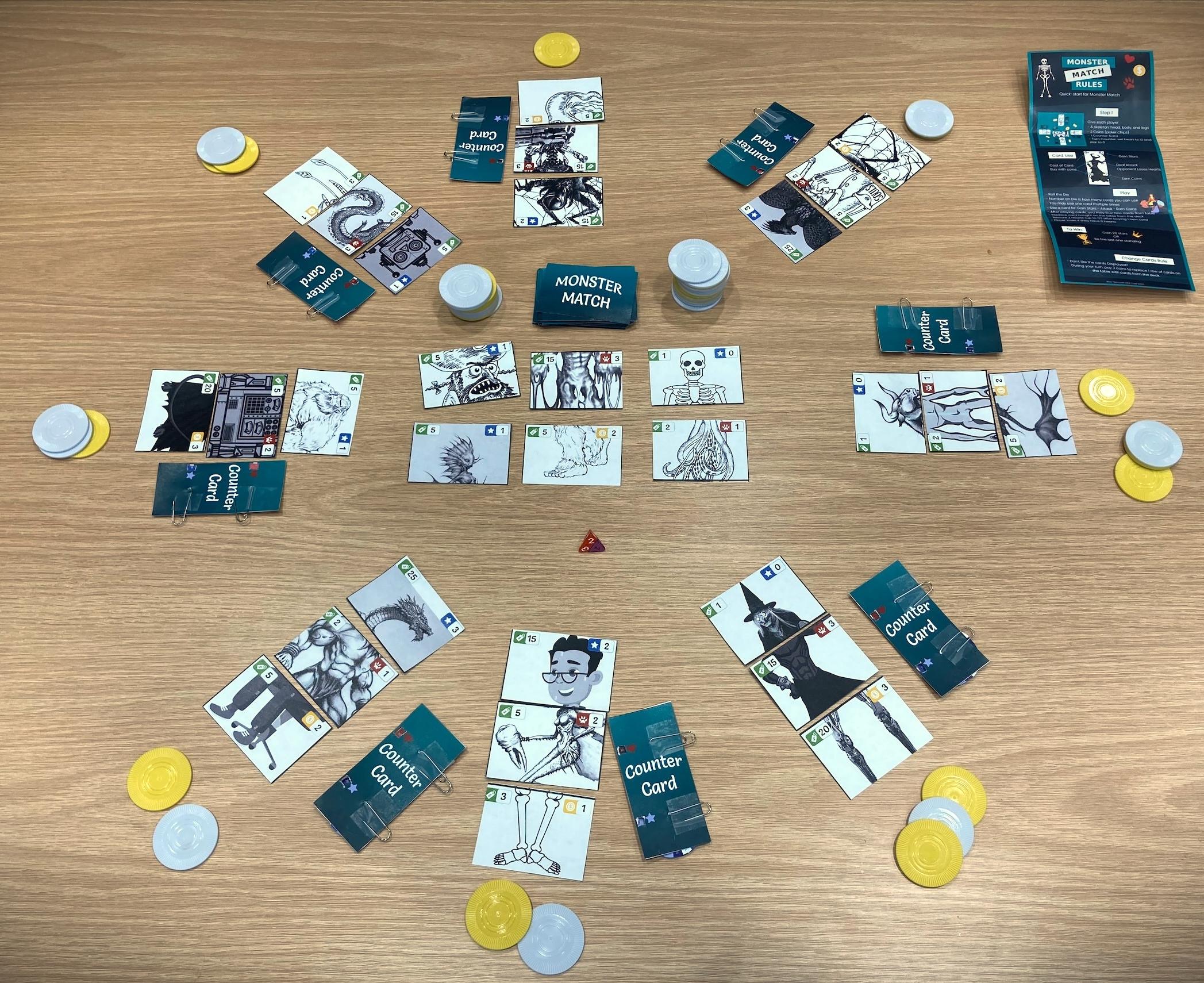
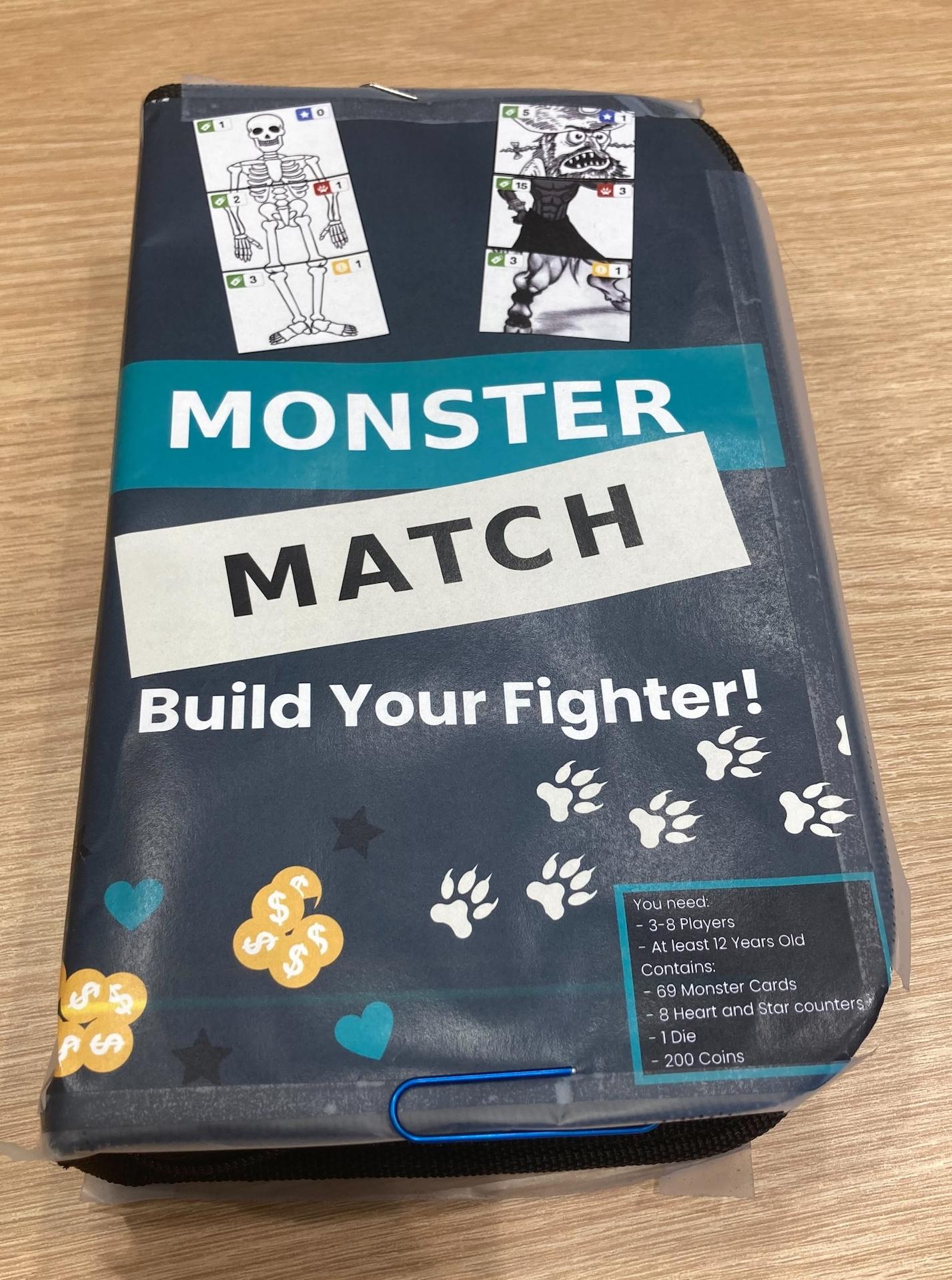



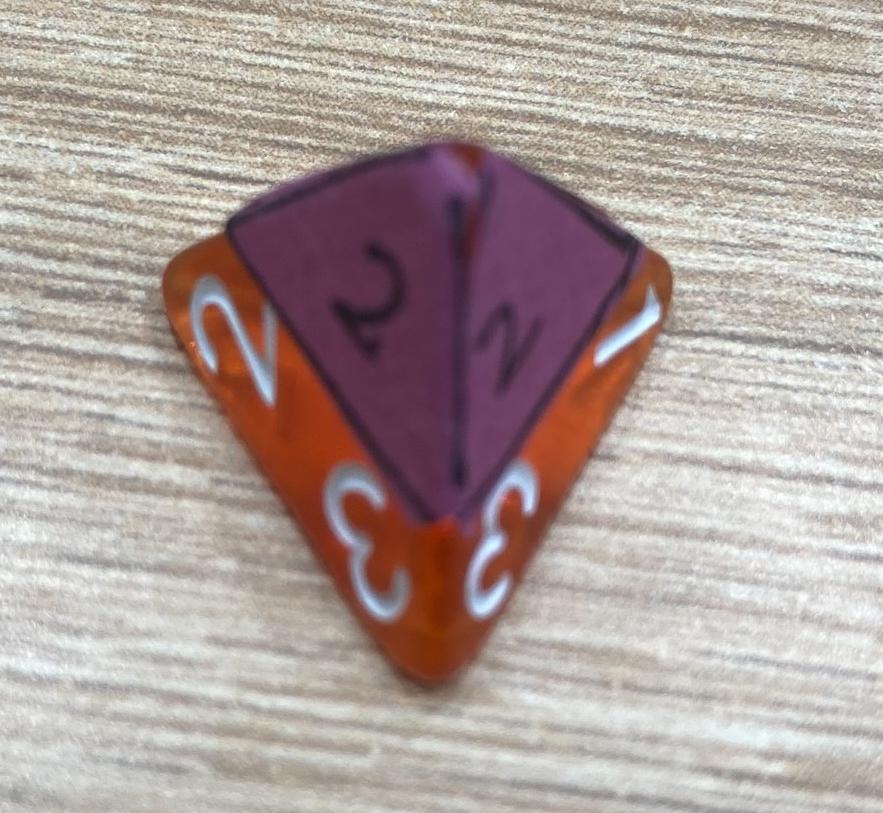
Playtest 3 Pt 1:
Feedback from players:
- Still, we found that players were reluctant to attack each-other, even with lower health and cheaper attack cards.
- We had a rule that states all players revive two health for every card they buy. We did this to allow players a fighting chance if they had enough luck and money, even if everyone ganged up on them. The players did not like the reviving as they thought it made attacking feel pointless.
- The players also gave us feedback on our written rules and said that our set up image was too small.
- Also, players were confused about some details such as what to do with a discarded card and which part of a body a card is.
Changes made:
- We removed the rule that allows players to heal from buying new cards.
Playtest 3 Pt 2:
Feedback from players:
Finally, players started attacking each other without the revive rule. The winner was the winner because they were the last person standing.
- Players, however, said they saw the value of reviving.
Changes made:
- We added back in the revive rule but reduced it to one heart revived per card bought.
- We also changed our rules printout to make the set up image bigger. We explained some parts of the game that were confusing in more detail. We also added a description of the game on our box back to give the players a general idea of the game goal.
Final Prototype:
- Game cover (front and back)

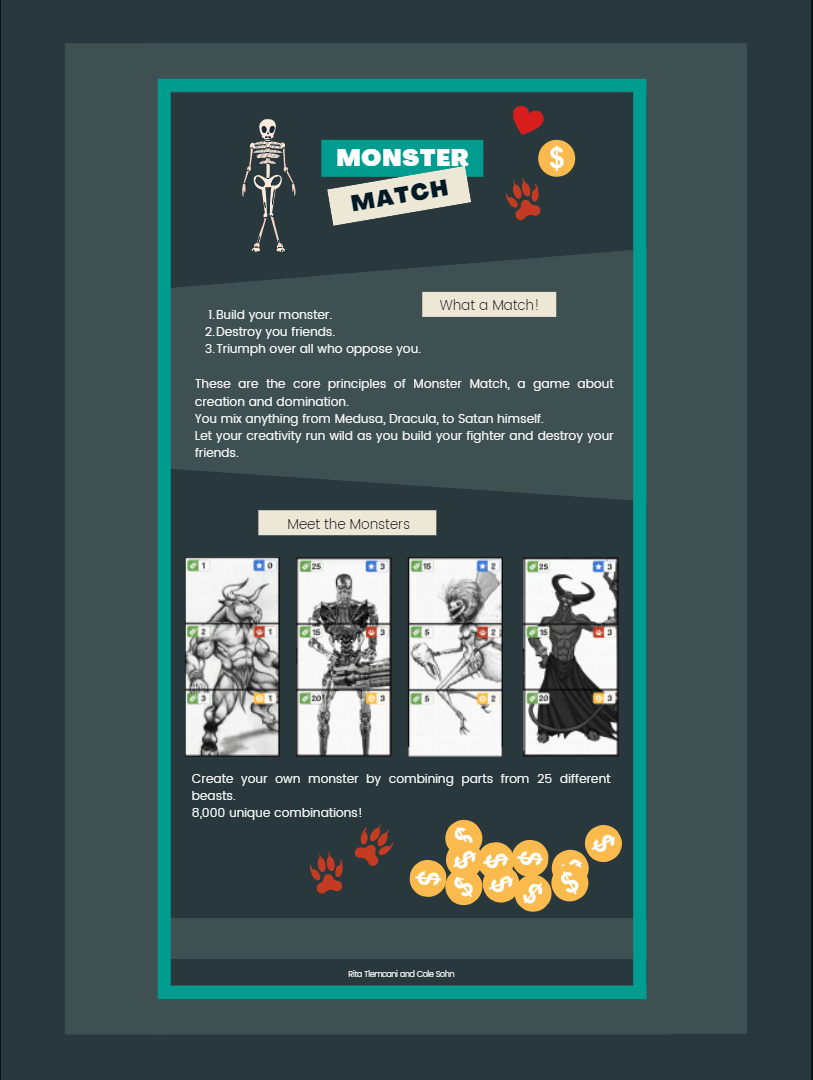
- Rules (front and back)
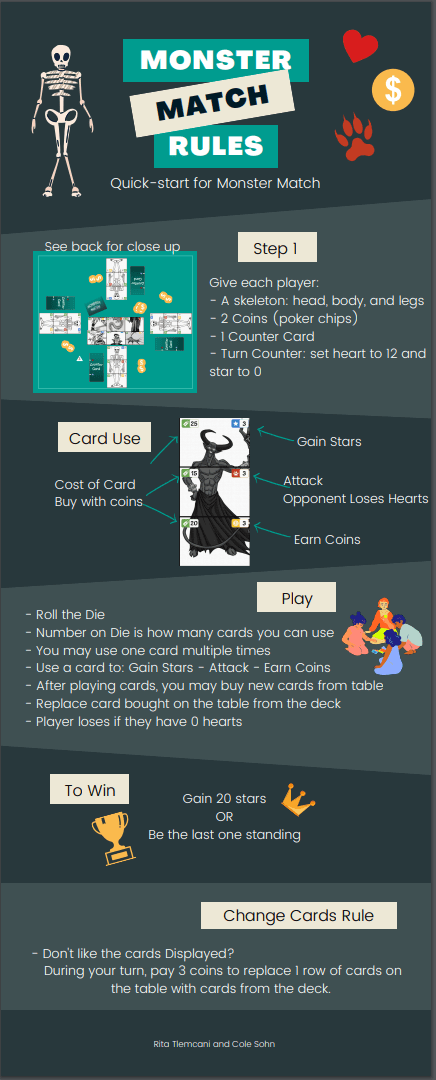
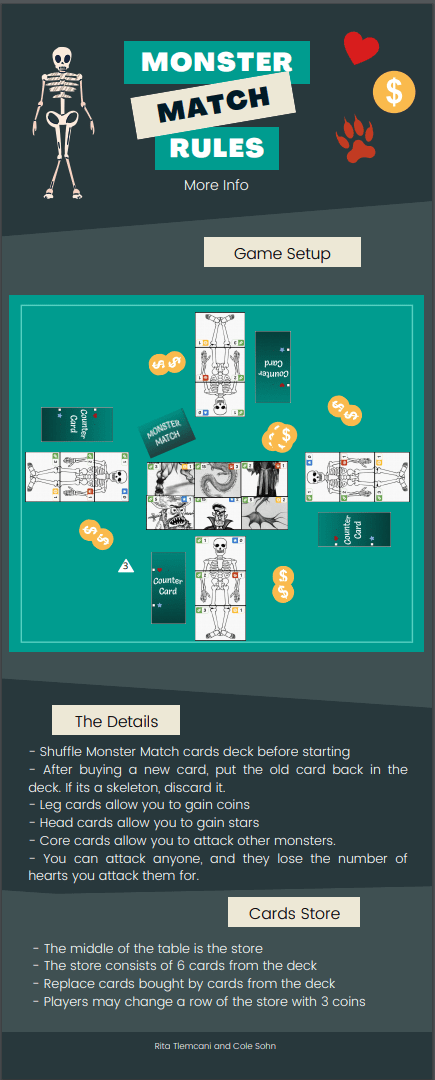
Marketing:

Playtest Video:
Youtube Link: https://www.youtube.com/watch?v=2yT4ybqu6wU
Print-n-play Version:
Accessibility:
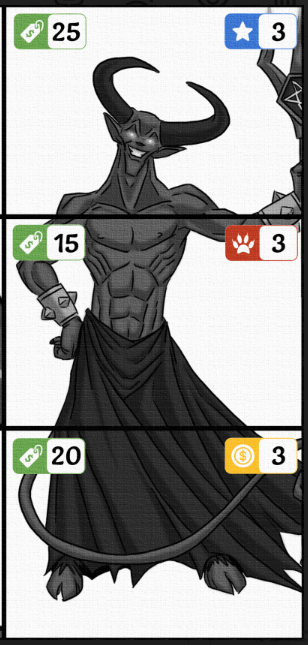
Although the colors may help, we made sure to use different symbols for different meaning. We initially had the same energy symbol for the legs card (one for cost and one for coins gained if the card is used) with different colors to separate. In our final prototype, we changed that to make the game more accessible to people who are color blind. We use a price tag image to represent the cost of the cards and a coin image to represent how much you earn from playing the card (see image on the right). Every other aspect of the game is based on symbols rather than colors.
Polishing:
We reprinted our final prototype cards in a more polished way. We added the values on the pdf before printing instead of writing them by hand like our first prototypes. We also added a back to our cards and brought everything together with a unified color palette.
We made cleaner heart and star counters. Our initial counters were all made by hand and the spinning numbers were hard to read. We made all the elements digitally and printed them for a cleaner look.


